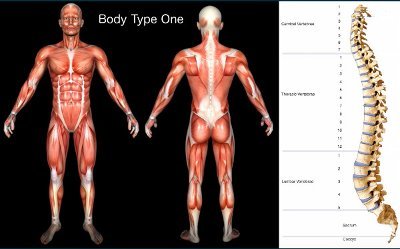
“What is my body type?” is a question that, along with Body Type Science and the science of genetics/DNA/genes, has grown greatly in popularity in the past few decades. Are the somatotypes/three body types real; endomorph, ectomorph, and mesomorph? No, they have no real scientific basis and were fully discredited in the 1950s as they are based solely on arbitrary, subjective shapes.
Are the hormone body types real? No, although hormones do, indeed, affect your body and weight. If they were real, then how do advocates explain the countless people in the world with non-Standard Body Type One (BT1) body types that are within safe BMI, yet they deal with skinny fat including cellulite and normal weight obesity but have no licensed medical doctor-diagnosed unbalanced hormone issues, like so many of our genetic Scientific Body Type Quiz users. The fact is, for something to be a real scientific truth it must apply equally to all human beings. Body Type Science applies equally to all human beings.
Scientifically, how do I know my body type? What scientific variables actually determine why and how to know what your body type is? Current mainstream science defines body type by three main scientific standards, as inaccurate as they are:
- Standard #1: The Standard Scientific Human Body Anatomy Book Body Type One (BT1) found in any mainstream scientific human body anatomy book (directly influenced by genetics/DNA), with fully developed muscles/muscle mass, no less. This standard is not accurate because, genetically, it is a fact that any part of the human body can be underdeveloped or undeveloped, to whatever degree. The Standard Body Type One (BT1) does not account for skinny fat (thin fat, cellulite, crepey skin, loose/saggy skin, and/or normal weight obesity) relative to underdeveloped muscles/muscle mass and vertebrae/posture. If you are within safe BMI yet have skinny fat where there should be muscles/mass, this is most likely due to genetics.
The Standard Scientific Human Body Anatomy Book Body Type One (BT1)
- Standard #2: Body Mass Index (BMI), calculated directly relative to the BT1. This standard is not accurate because it does not take into account any type of skinny fat. If you are within safe BMI but have skinny fat in place of where there should be muscle/mass on your body, then where is the muscle/mass that mainstream science and doctors say is already on every BT1 once within safe BMI (especially for people under 40 years old)? Moreover, it is possible to have excess muscle mass on your body that will put you into the overweight or obese columns of your BMI weight scale, but because you do not have excess fat on your body you are not overweight or obese (think Dwayne Johnson).

Body Mass Index (BMI) Weight Ranges - Standard #3: Basal Metabolic Rate (BMR) which is the number of calories per day your specific body needs for basic functioning, calculated directly relative to the BT1 and BMI. This standard is not accurate because, metabolically, the scientifically calculated standard Mifflin St Jeor equation and Harris-Benedict equation for activity do not take into account skinny fat. Science recognizes that one (1) pound of muscle mass burns six (6) calories per day, but one (1) pound of skinny fat and/or fat burns only two (2) to three (3) calories per day. Thus, the more skinny fat you have on your body, the more negatively your metabolism is affected, the less accurate your BMR calculations are, and the fewer calories your body actually needs daily.
Diet, exercise, and lifestyle also play key roles.
The Human Body Scaffolding and Structure, Genetics/DNA – How to Know What Your Body Type Is?
Like any physical thing, what the thing is made of matters. That includes its scaffolding, structure, and overall development as well as the quality of the resources and materials used, no less. The story of the Three Little Pigs and the big, bad wolf paints this picture very clearly. A house made of quality bricks and mortar that is built by true professionals in a well-chosen location on a solid, concrete foundation is much better — stronger, safer, more secure, resilient, and sustainable in the long term — than an amateur house made of sticks, hay, and mud.
The human body is really no different. The more fully and properly genetically developed the bones, spine, vertebrae, muscles, and muscle mass, no less, the probabilities increase that the human body will be stronger, more functional, efficient, effective, balanced, and healthy. The less-developed all those things, the more skinny fat and fat that is on the body, and the higher the probabilities are that the human body will be less functional, efficient, effective, balanced, and healthy, including metabolism.
Genetics/DNA/Genes, The Blueprint & Encoding of the Human Body – What is My Body Type?
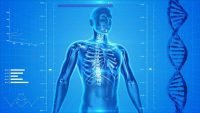 Genetics/DNA are the blueprint and encoding for the human body. Your genes determine how all aspects of your body develop from day one. Any part(s) of the human body can be underdeveloped or undeveloped, including vertebrae (posture) and muscles/muscle mass.
Genetics/DNA are the blueprint and encoding for the human body. Your genes determine how all aspects of your body develop from day one. Any part(s) of the human body can be underdeveloped or undeveloped, including vertebrae (posture) and muscles/muscle mass.
Mainstream science is adamant that every human being is born in the same general type of human body in terms of development of bones (206), spine/vertebra (26 vertebrae/33 individual bones), muscles (600+), etc. which can be readily seen and studied in any standard scientific human body anatomy book.
Go to any mainstream doctor and they will likely have the same Standard Scientific Human Body Anatomy Book Body Type One (BT1) image hanging in their office showing what the standard human body looks like fully developed, including vertebrae (posture) and muscles/muscle mass. Yet, for countless people in the world, their human body and shape has never looked like the Standard Scientific Human Body Anatomy Book Body Type One (BT1), no matter how diligent they are with their diet, exercise, and lifestyle. The fact is, there are countless different body type shapes.
Why? Because it is a genetic fact that any part of the human body can be underdeveloped or undeveloped, to whatever degree. So, then, how to know what your body type is?

What is My Body Type? Fellow One Research, The Four Body Types – Genetics/DNA/Genes
Fellow One Research has developed The Four Body Types’ Body Type Science genetic Scientific Body Type Quiz/Test by reckoning a wide array of relevant scientific variables through proprietary algorithms as well as standard scientific equations and formulas to identify and determine, as accurately as possible (an MRI machine would be most accurate), whether you are a Body Type One (BT1), Body  Type Two (BT2), Body Type Three (BT3), or Body Type Four (BT4).
Type Two (BT2), Body Type Three (BT3), or Body Type Four (BT4).
Relative to the 26 Vertebrae, including 7 Cervical, 12 Thoracic, 5 Lumbar, 1 Sacrum, and 1 Coccyx:
Body Type One (BT1)– All 26 Vertebrae Fully Developed, relative to the 24 Moveable & Two Fixed Bones (0 Vertebrae Underdeveloped in relation to Posture & Muscles/Muscle Mass – Minimal Skinny Fat with Low Proclivity Towards Obesity)
Body Type Two (BT2) – Between 25 and 18 Vertebrae Fully Developed, relative to the 24 Moveable & Two Fixed Bones (1-8 Vertebrae Underdeveloped in relation to Posture & Muscles/Muscle Mass – Some Skinny Fat with Moderate Proclivity Towards Obesity)
Body Type Three (BT3) – Between 17 and 09 Vertebrae Fully Developed, relative to the 24 Moveable & Two Fixed Bones (9-17 Vertebrae Underdeveloped in relation to Posture & Muscles/Muscle Mass – Skinny Fat is Likely Widespread with High Proclivity Towards Obesity)
Body Type Four (BT4) – Between 08 and 0 Vertebrae Fully Developed, relative to the 24 Moveable & Two Fixed Bones (18-26 Vertebrae Underdeveloped in relation to Posture & Muscles/Muscle Mass – Skinny Fat is Likely Severe with Very High Proclivity Towards Obesity)
Genetics/DNA/Genes – The Standard Scientific Human Body Anatomy Book Body Type One (BT1)

That Standard Scientific Human Body Anatomy Book Body Type One image shows the human body when fully developed. According to mainstream science, unless your doctor has specifically diagnosed you with a deformity, malformation, abnormality, or the like (such as Poland syndrome or scoliosis), you have a “normal” human body — just like the Standard Scientific Human Body Anatomy Book Body Type One likely hanging on their wall. And that is the standard you and all human beings are held to. That perfect standard that a minority few — probably 30% or so of the entire human population — actually meet and are.
However, strong evidence is mounting that not all human beings are a fully developed Standard Scientific Human Body Anatomy Book Body Type One (BT1) at birth. As the evidence and facts grow and strengthen with each passing day, more and more people are waking up to the truth that not all human bodies are born generally the same, as defined by the Standard Scientific Human Body Anatomy Book Body Type One and claimed by most mainstream doctors and scientists. Such evidence and facts help explain things like the global obesity epidemic as well as skinny fat, no less.
Skinny Fat & Genetics/DNA/Genes
Every year, billions of dollars are spent on scientific research for obesity, cancer, etc. Yet, mainstream science has no cure for any kind of cancer. Mainstream scientists and medical doctors have no explanation for why obesity is getting worse globally. Just as mainstream  medical doctors and scientists have no explanation for skinny fat including cellulite and normal weight obesity.
medical doctors and scientists have no explanation for skinny fat including cellulite and normal weight obesity.
The disease of obesity is defined as having too much fat on your body which takes you outside your safe BMI weight range. Skinny fat means having an unusual amount of fat (cellulite, thin fat, crepey skin, loose skin, saggy skin, normal weight obesity) on your body even within your safe BMI. Normal weight obesity is defined as having too much fat on your body when within your safe BMI.
For many people skinny fat is genetic. Just as lack of muscles/muscle mass is genetic. Therefore, for countless people globally who have skinny fat where there should be muscles/muscle mass, that is genetics. There is no FDA-approved method to get rid of skinny fat, including cellulite. Likewise, there is no amount of exercise, cardio or resistance, that you can do in the gym to turn skinny fat into muscle.
It is an undisputed fact that not all human bodies have skinny fat. There are both male and female human bodies that are genetically gifted and do not experience skinny fat. Fellow One Research’s Body Type Science offers a valid, scientific, data-backed explanation for skinny fat and the obesity epidemic.
How To Know What Your Body Type Is – The Science Behind The Four Body Types
What the Fellow One Research, The Four (4) Body Types research and Body Type Test (Quiz) are revealing is that the spine, spinal extension, and vertebrae (cervical 1-7, thoracic 1-12, lumbar 1-5, sacrum, coccyx) development all matter. Relative to each specific vertebra, muscles and muscle mass development matter. As already mentioned, any human body can have any part underdeveloped or undeveloped including organs, ligaments, tendons, blood vessels, arteries, bones, spine, vertebrae, muscles, muscle mass, etc.
The Four Body Types, Hypotheses & Theory – Following the Logic and Reason
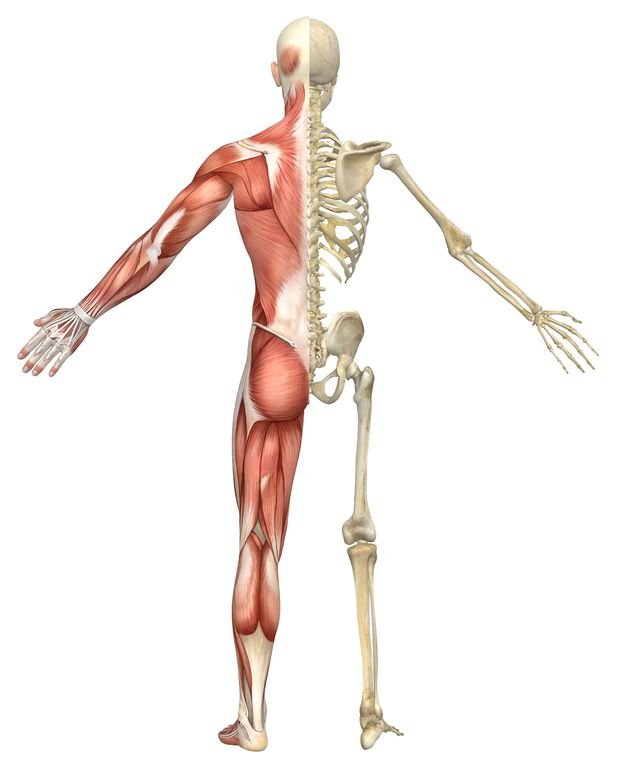 *If it is true that any part of the human body can be genetically underdeveloped, then it is a fact that muscles/mass & vertebrae/posture can be underdeveloped or undeveloped, to whatever degree.
*If it is true that any part of the human body can be genetically underdeveloped, then it is a fact that muscles/mass & vertebrae/posture can be underdeveloped or undeveloped, to whatever degree.
*If it is true that muscles/mass can be genetically underdeveloped, then skinny fat, especially cellulite and normal weight obesity, is a valid scientific explanation for what exists in place of that genetically underdeveloped/missing muscles/mass.
*If it is true that, anatomically, every vertebra houses a specific set of muscle(s), then it is true that those specific muscle(s) directly influence the specific vertebra.
*If it is true that vertebrae directly affect posture, then it is true that muscles/mass directly influences posture.
*If BMI, BMR, & the Standard Scientific Human Body Anatomy Book Body Type One are the accurate gold standards in determining human health, then how do mainstream scientists and medical doctors explain so many different body types and skinny fat including normal weight obesity, no less, relative to countless people worldwide who are within safe BMI yet do not look like the Standard Scientific Human Body Anatomy Book Body Type One no matter how diligent and healthy they are with their daily diet, exercise, and lifestyle?
The more underdeveloped/undeveloped the human body, the more that human body is prone to having skinny fat, putting on excess fat weight, and becoming overweight or obese. Which directly equates to one of The Four Body Types. Typically, once a person experiences the obesity disease, whether childhood obesity or adult obesity, it becomes harder and harder to keep the weight off while trying to properly build muscle.
Genetics/DNA/Genes, Balance, Health, & Aging Gracefully – What Is My Body Type?
The more developed and balanced the human body — a true Standard Body Type One (BT1) being the model of balance and health, like a professional athlete (less than 1% of the population) or athletic body type — the more physical health that directly correlates. Keeping in mind that science is trailblazing new frontiers on many fronts, including CRISPR gene editing. Mental, emotional, and spiritual states are whole other conversations.
The healthier the body, and the healthier the living in terms of diet, exercise, and lifestyle overall, including a sustainable environment, no less, the likelihood greatly increases that the better the specific human being will age well as time passes. Aging gracefully and sustainably is all about maintaining balance and health over the long term. Although genetics/DNA/genes do have their fair say.
TAKE THE FELLOW ONE RESEARCH, THE FOUR BODY TYPES, BODY TYPE QUIZ/TEST
Body Type Science Standard – Comparing The Four Body Types


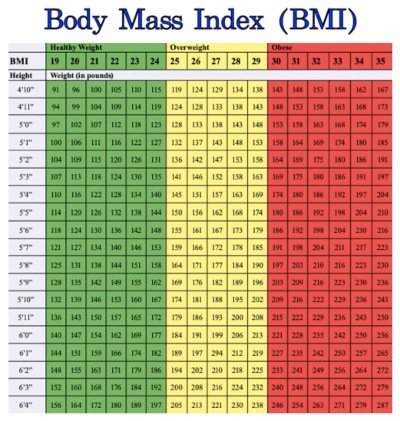

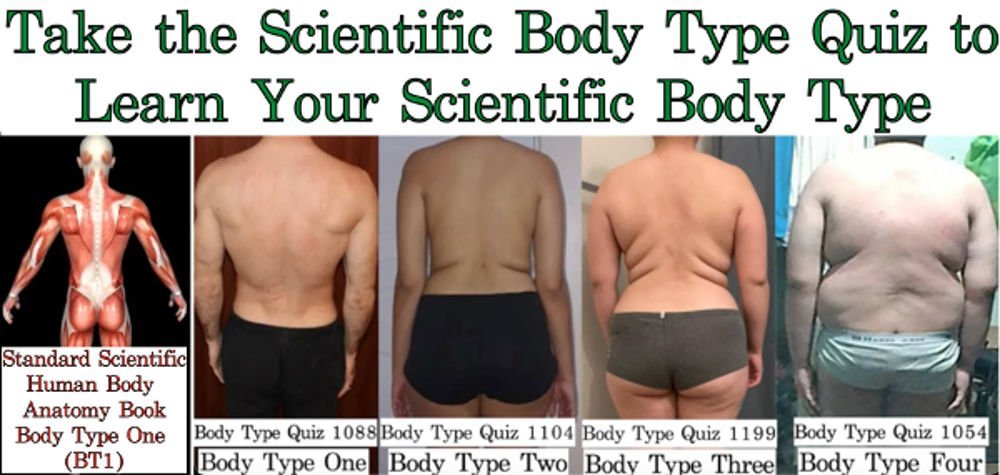






Comment #6043
Wow, I'm so excited to know my body type
and Knowing information about our bodies, way of eating and lifestyle is very important
nice work , keep effort.
Comment #6536
it is really informative.
Comment #6499
This is a really good test that teaches you new things in the health industry. Help you get a good grasp on what you can do to have a healthy lifestyle. I only rated it 4 starts for interface purposes, it could be improved
Comment #6535
"That's great to hear! Discovering your body type is indeed a crucial step toward effective and sustainable weight management.